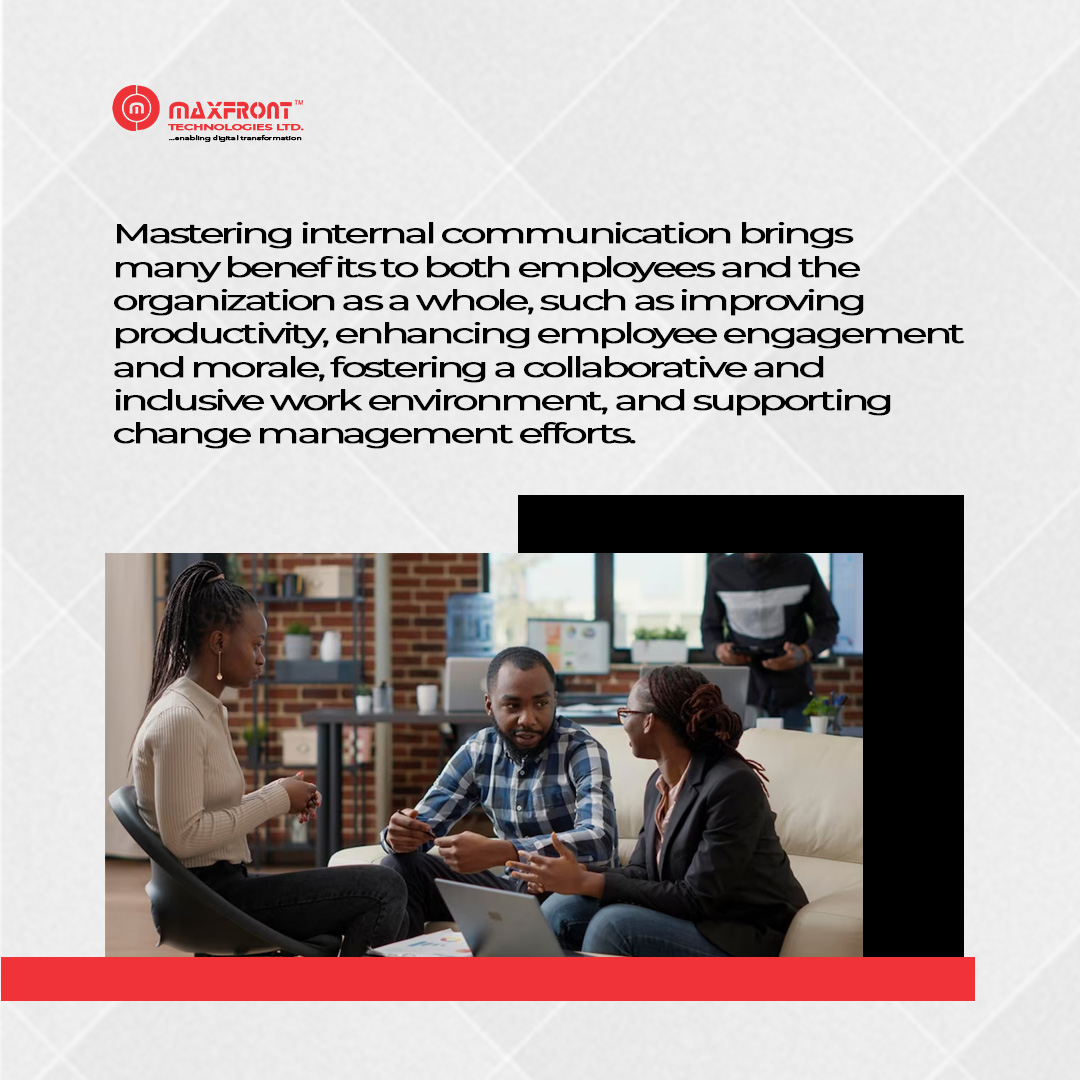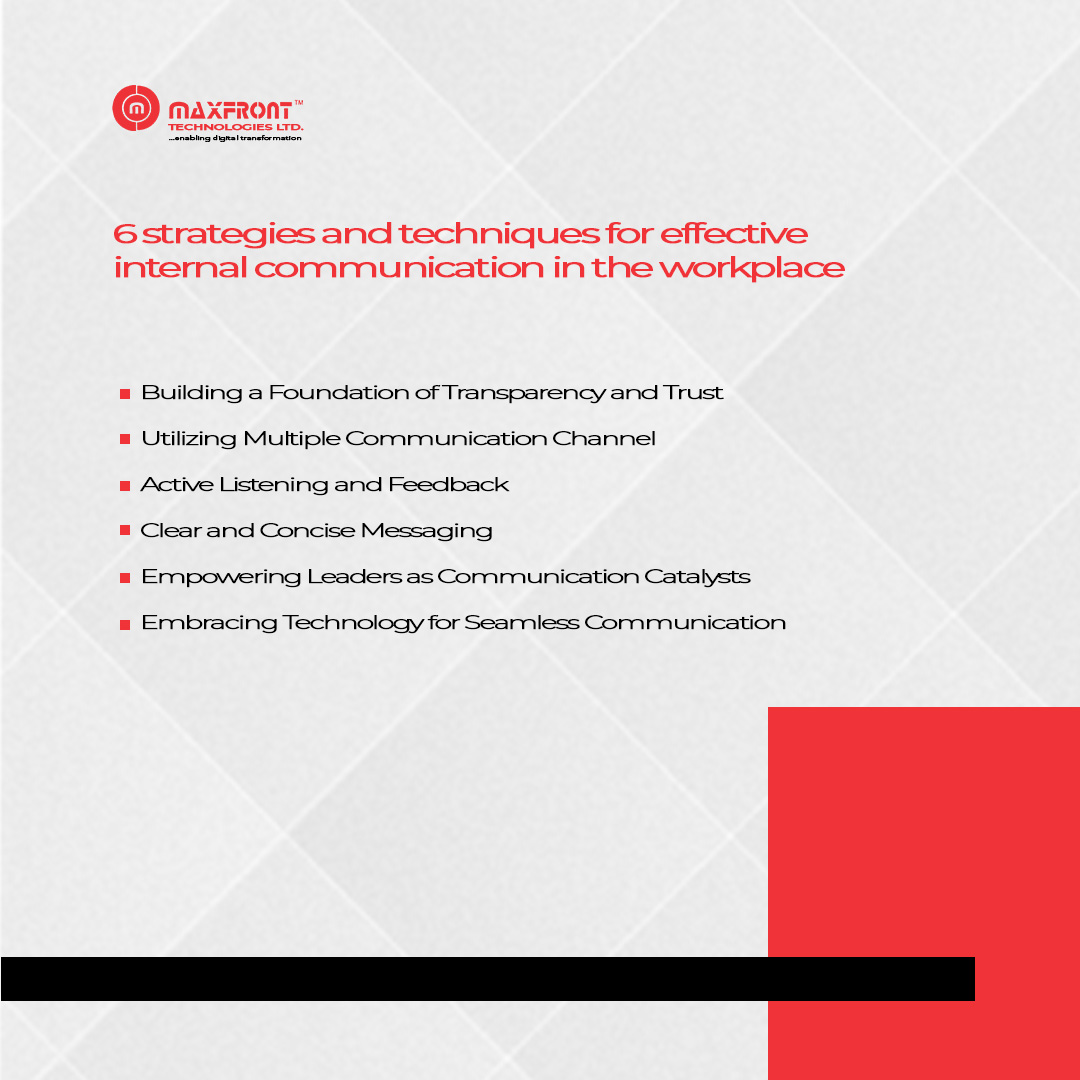Introduction

Effective internal communication is the lifeblood of any successful organization. It ensures that teams are aligned, information flows seamlessly, and employees feel engaged and empowered. Mastering the art of internal communication is essential for creating a harmonious work environment and driving organizational success. This blog post will discuss the strategies and techniques that can help you master the art of effective internal communication in your workplace, such as building a foundation of transparency and trust, utilizing multiple communication channels, actively listening to feedback, and delivering clear and concise messages. Additionally, it will explore the role of leaders as communication catalysts and the benefits of embracing technology for seamless communication.
Internal communication refers to exchanging information, ideas, and messages within an organization. It encompasses all the channels, processes, and strategies used to communicate with employees at various levels, from top management to frontline workers. Internal communication aims to inform, engage, and align employees, fostering a collaborative and cohesive work environment. Mastering internal communication brings many benefits to both employees and the organization as a whole, such as improving productivity, enhancing employee engagement and morale, fostering a collaborative and inclusive work environment, and supporting change management efforts.
Here are 6 strategies and techniques for effective internal communication in the workplace

- Building a Foundation of Transparency and Trust
Effective internal communication starts with a foundation of transparency and trust. Create an open and honest work environment where employees feel comfortable sharing their thoughts, ideas, and concerns. Encourage transparent communication from leadership, ensuring that important information is shared promptly and inclusively. When trust is established, employees are more likely to participate and engage in meaningful conversations actively, leading to improved collaboration and problem-solving.
- Utilizing Multiple Communication Channels
One size does not fit all when it comes to internal communication. Individuals and teams have varying preferences for how they receive and process information. Utilize a mix of communication channels to cater to diverse needs. Emails, team meetings, project management tools, instant messaging platforms, and intranet portals are just a few channels that can be leveraged to ensure effective communication. Adapt your communication approach based on the nature of the message and the intended audience to maximize understanding and engagement.
- Active Listening and Feedback
Effective internal communication is a two-way street. Encourage active listening and create opportunities for employees to provide feedback. Actively listen to their concerns, ideas, and suggestions, and respond promptly and constructively. Regularly solicit feedback through surveys, suggestion boxes, or town hall meetings to gain insights into the pulse of your organization. You foster a culture of engagement and continuous improvement by valuing and acting upon employee feedback.
- Clear and Concise Messaging
In a fast-paced work environment, clarity and conciseness are key. Avoid jargon and complex language that can hinder understanding. Craft your messages in a clear, concise, and accessible manner, ensuring that the intended meaning is conveyed without ambiguity. Use visual aids, infographics, and storytelling techniques to make complex information more digestible. Consider the needs and perspectives of your audience to deliver messages that resonate and inspire action.
- Empowering Leaders as Communication Catalysts
Leaders play a critical role in driving effective internal communication. Equip leaders with the necessary communication skills to be effective catalysts within their teams. Encourage them to lead by example, actively engage with employees, providing context and direction, empowering and supporting communication skills, promote transparent and inclusive communication practices. Invest in leadership development programs emphasizing effective communication as a core competency, ensuring leaders are equipped to inspire and motivate their teams through open and honest dialogue.
- Embracing Technology for Seamless Communication
Technology revolutionizes internal communication, providing innovative seamless collaboration and information-sharing tools. Embrace communication platforms, project management software, and virtual collaboration tools that enhance connectivity and streamline workflows. Stay informed about the latest communication technologies and evaluate their relevance to your organization’s needs. Thoughtfully integrate technology into your communication strategy to optimize efficiency and productivity.
Conclusion
Mastering the art of effective internal communication is a continuous journey that requires commitment and adaptability. Internal communication is essential for organizational operations, enabling collaboration, knowledge sharing, and promoting a sense of belonging among employees. It also helps foster a positive company culture, builds trust and engagement, and contributes to higher employee satisfaction and retention. You can create a workplace culture where communication thrives by fostering transparency, utilizing diverse communication channels, actively listening to feedback, delivering clear messages, empowering leaders, and embracing technology. Effective internal communication leads to improved collaboration, increased employee engagement, and, ultimately, organizational success. Start implementing these strategies today and unlock the transformative power of communication within your workplace.